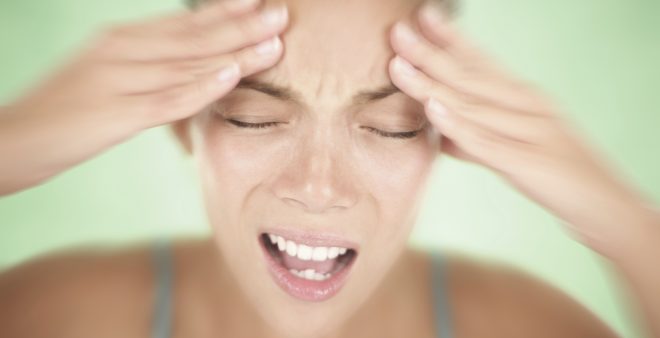
Clinic News
'It's beginning to look a lot like Christmas'. We hope you're looking forward to some proper unrestricted family time this year where you can resume family traditions. It should also be a time for you to recharge and get ready for the year ahead. We need a recharge too so the clinic will be offering reduced hours between Christmas and New Year - please see the website for details. https://www.beestonchiropractic.co.uk/clinic-christmas-opening-hours-2022-2023
We congratulate Luke and Erin on being awarded their degree from the AECC University College at the graduation ceremony in Bournemouth last week - beautiful blue sky for their special day.
As we wait with bated breathe on a start date in January for Erin - concerns mount due to strike action at UK Border control and the Home office as to whether this will delay her visa application further. We hope to have an update by the New Year.
We've had a successful month with the craft stalls so far and are looking forward to the final three over the next few weeks. Cards by Anne, Shell Jewellery by Matt and All Things Cats with Jo.
The sweetie jar challenge will be drawn on 12th December - the winner will be contacted directly and hopefully will share their bounty with friends and family over the festive season. Thank you to everyone who has had a go - it has been a huge success.
Thanks to all your generous contributions the current '30 Trees for 30 Years' fund stands at over £2000 now. Our latest huge contribution was from Kelly Hart completing her 100-mile swim at Bramcote leisure centre Congratulations Kelly and thank you.
We are still waiting for an update on Luke's cycle ride - he will not be doing this all in one go! But there is still time to join him or sponsor him if you can.
Our final fundraiser for this year will be the sale of the recipe book. Many have contributed to its production. We have over 20 recipes to share with you. We hope to have it available before Christmas.
Don't forget Jenny Flowers the sports massage therapist will be back in the clinic after her maternity leave in January - her diary is already filling up with appointments.
This month we focus on chronic pain - is this cold wet weather getting into your joints? Find out why and what you can do to ease the pain in this edition.
![]()
Back Pain
Chronic pain is usually described as any persistent or intermittent pain that lasts more than three months. Clinical studies reveal that chronic pain, as a stress state, often induces low mood. With 80% of adults experiencing lower back pain at some point in their lives, this is a very widespread problem. Low mood can often cause frequent or unexplained pain, just as back or chronic pain can cause restlessness, stress, sadness, and other emotions associated with low mood. Regardless of where the pain comes from, it is important to learn how to take care of yourself and your back, to prevent back pain from occurring at all.
Here are a few tips to help ensure a healthy mind and body:
- Exercise: Exercising daily is crucial to maintaining a healthy lifestyle. Make sure you warm up beforehand and then cool down and stretch after each session. Stretching allows for posture improvement, blood-flow, and tension reduction. Stretching the hamstrings and hip flexors, muscles that are attached to the pelvis, can also help reduce back pain. You don’t need to exercise for long, just half an hour of gentle exercise is usually enough to increase your breathing as long as it is done most days.
- Healthy Diet: Ensure that you are keeping up with a healthy diet – even when life gets busy and hectic. Healthy whole foods are vital to having long-lasting, slow release energy and maintaining a balanced mood. Along with drinking more water, try adding more fruits and vegetables to give your body a boost.
- Treatment: If you continue to have pain, seek advice from a healthcare professional. Chiropractors specialise in pain reduction, which can improve overall health.
Back pain and low mood should not be overlooked. If you suffer from back pain, keep these tips in mind and seek professional advice where you can.

Weather Changes and Chronic Back Pain
Temperatures are changing as the colder seasons approach. Those who suffer with chronic back pain might notice that their condition aggravates as temperatures or seasons change. Although there’s not much scientific evidence to prove a link between chronic pain and humidity, temperature changes and wind speed, weather changes can certainly affect those who suffer with joint pain conditions, especially arthritis and osteoarthritis.
The most commonly accepted reasoning is that with colder temperatures comes lower air pressure, which can cause joint tissues to expand and further worsen joints already prone to swelling and tenderness.
If cold weather worsens your pain, you can take these three simple steps to combat it.
- Heat Therapy
Including heat therapy in your daily routine can help to reduce stiffness and boost healing through increased blood circulation. Try applying a warm towel or a heating pad to your painful area for about 20 minutes for temporary pain relief. You can also opt for over-the-counter heat wraps.
- Water Therapy
If you like swimming, try to visit heated indoor pools with hot baths, Jacuzzis and saunas a few times a week for almost instant pain relief.
- Stay Active
As tempting as it is to lounge on the sofa during winter evenings, it is crucial to keep your spine mobile and stay active. If your pain is too severe to go to the gym, try long walks with hiking poles or a Pilates routine at home.
However, if your pain stops you from leading a normal life, the best option is to visit your doctor and professionally address the root causes of joint and back pain.

Is the cold weather making your back pain worse?
Do you think your back pain gets worse in winter?
Did you know… Those who suffer with chronic back pain might notice it gets worse during autumn and winter.
In fact… Although there’s not much scientific evidence that shows a link between chronic pain and humidity, temperature changes and wind speed, weather changes can affect those, who suffer with joint pain conditions, especially arthritis and osteoarthritis.

Did you know… The most commonly accepted reasoning is that with colder temperatures comes lower air pressure, that can cause joint tissues to expand—further worsening joints already prone to swelling and tenderness
If cold weather worsens your pain, you can prevent it yourself and combat it with these three simple steps:
- Heat therapy
Including heat therapy in your daily routine can help to reduce stiffness and boost healing through increased blood circulation. Try applying a warm towel or a heating pad to your painful area for about 20 minutes for temporary pain relief. You can also go for over-the-counter heat wraps
- Water therapy
If you like swimming, try to visit heated indoor pool with hot baths, Jacuzzis and saunas a few times a week for almost instant relief from your pain

- Stay active
As tempting as it is to just stay on the sofa during winter evenings, it is crucial to keep your spine mobile and stay active. If your pain is too severe to go to the gym, try long walks with hiking poles or Pilates at home

Chronic Pain And Depression
Pain is an unpleasant sensation that plays an important function in our lives.
When you suffer an acute injury, pain warns you to stop the activity that causes the injury and informs you to take care of the affected body part.
Chronic pain, on the other hand has no time limit, and often has no apparent cause and serves no apparent biological purpose. Some people, often older adults, suffer from chronic pain without any definable past injury or signs of body damage. Common chronic pain can be caused by headaches, the lower back, and arthritis and sometimes there is little evidence to explain such pain. Emerging scientific evidence is demonstrating that the nerves in the spinal cord of patients with chronic pain can undergo structural changes.
Emotional and social issues often magnify the effects of chronic pain. People with chronic pain frequently report a wide range of limitations in family and social roles, like the inability to perform household or workplace chores, take care of children, or engage in social activities. In turn, spouses, children, and co-workers often have to take over these responsibilities. These changes often lead to depression, anxiety, resentment, and anger for the pain patient and can lead to stress and strain in family and other social relationships.
How is depression linked with chronic pain?
Depression is the most common emotion connected with chronic pain. It is found 3 to 4 times more in people with chronic pain than in the general population. The combination of chronic pain with depression is often associated with greater disability than either depression or chronic pain alone.
People with chronic pain and depression suffer vivid changes in their physical, mental, and social well-being — and in their quality of life. Such people often find it difficult to sleep, are easily agitated, cannot perform their normal activities of daily living, cannot concentrate, and are often unable to perform their duties at work and at home. These changes to quality of life starts a vicious cycle — pain leads to more depression, which leads to more chronic pain. In some cases, the depression occurs before the pain.
Signs and Symptoms
Some of the common signs and symptoms of chronic pain include:
- Pain beyond 6 months after an injury
- Pain from stimuli which are not normally painful (Allodynia)
- Increased pain from stimuli that are normally painful (Hyperpathia)
- Being overly sensitive to pain (Hypersensation)
Signs of major clinical depression will usually occur daily for 2 weeks or more, and often include many of the following:
- A feeling of sadness; feeling blue, hopeless, or irritable, often with crying spells
- Changes in appetite or weight (loss or gain) and/or sleep (too much or too little)
- Poor concentration or memory
- Feeling restless or exhausted
- Loss of interest or pleasure in usual activities, including sex
- Feeling of worthlessness and/or guilt
What treatments are there for chronic pain and depression?
The first step in coping with chronic pain is to verify its cause, if possible. Addressing the problem will help the pain subside. In other cases, especially when the pain is chronic, you should try to keep the chronic pain from being the entire focus of your life.
- Stay active and do not avoid activities that cause pain simply because they cause pain. The amount and type of activity should be directed by your doctor, so that activities that might actually cause more harm are avoided.
- Distraction (redirecting your attention away from chronic pain), imagery and dissociation (detaching yourself from the chronic pain) can be useful.
- Relaxation training, hypnosis, yoga and meditation can help you cope with chronic pain. Cognitive therapy can also help patients recognise destructive patterns of emotion and behavior and help them modify or replace such behaviors and thoughts with more reasonable or supportive ones.
Involving your family and friends may be helpful with your recovery.
We treat all conditions that affect any muscle or joint in your body, from your head to your little toe! One of the most common complaints that we treat is back pain and Chiropractic is recommended by the government authority, the National Institute for Clinical Excellence (NICE) for acute and chronic back pain. Some of the other conditions that we treat are neck and headache, shoulder pain, leg and hip pain, knee and foot pain, sciatica and arthritis. Our registered Chiropractors all have at least five years of training. Treatment costs can be covered through most health insurers. If you are in any doubt, we are always very happy to talk with you on the phone to see if your condition will respond well to Chiropractic treatment. Call the clinic now to arrange an appointment time that works for you. 0115 9225085 If you would like to opt-out of receiving these newsletters please follow the unsubscribe link below, email alex@beestonchiropractic.co.uk or let us know at your next appointment.






